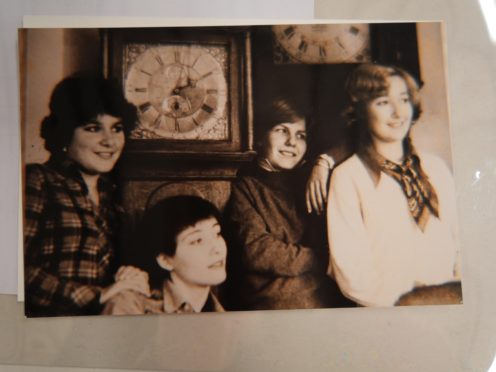A photo of Dame Emma Thompson, Sandi Toksvig and Jan Ravens performing together in a student comedy show is on display as part of a new exhibition in Cambridge.
The exhibition, called The Rising Tide: Women At Cambridge, charts the history of women’s participation and exclusion at the university.
The photo of the trio, who were members of world-famous student comedy society Cambridge Footlights, shows them in their 1980 show called Woman’s Hour.

The fourth member of their cast was Hilary Duguid, who went on to be a singer and produce audio guides.
It was the first all-female Footlights show and they staged it because they were reportedly “sick of getting cast as receptionists in sketches”.
While Footlights has helped launch many careers, including those of Olivia Colman and Mel (Giedroyc) and Sue (Perkins), it had a history of being male-dominated and in 1933 staged a production called No More Women with men filling every role.
A programme from the show is also among the items displayed in the exhibition.
Co-curator Dr Ben Griffin said in the early 20th century the only acting opportunities for women at Cambridge University were at individual colleges.
“Groups like Footlights, which was a university-wide society, wouldn’t let women participate,” he said.
Dr Griffin added that an “experiment” to allow women on stage in 1932 prompted a “backlash” the following year, with the production No More Women in 1933.
“The audience didn’t like to see women on the stage,” he said. “They clearly enjoyed the sight of men in drag performing the female roles.”

Women were not allowed back on stage until the 1950s, and none were granted full membership until 1964 – with Germaine Greer among the first.
Comic actor Tim Brooke-Taylor and Monty Python star Eric Idle were on the committee at the time and it was said that they were “driving” the changes, Dr Griffin said.
He said that “frustratingly little” was known about the first all-female Footlights show in 1980 “other than what the four performers have said in the press”.
“That they were sick of getting cast as receptionists in sketches and so they decided to put on their own show.”
Impressionist Ravens was the first female president of Footlights, which was founded in 1883, in 1979-80.
“No victory is ever absolute and very few victories are attained in one dramatic blow,” said Dr Griffin. “It’s an incremental process and patterns of exclusion are constantly being remade so they constantly have to be challenged.”
Girton College in Cambridge became the first institution offering women a residential university education in the UK 150 years ago, but Cambridge was the last university to grant women degrees, which did not happen until 1948, Dr Griffin said.
“There’s an interesting story to tell about what ways women could participate and which ways they were prevented from participating in the university,” he said, adding that the university swimming club did not admit women until 1970.
The free exhibition also features portraits of influential female Cambridge University alumni including Baroness Brenda Hale, president of the Supreme Court.
The Rising Tide: Women At Cambridge opens to the public at Cambridge University Library on Monday October 14.
